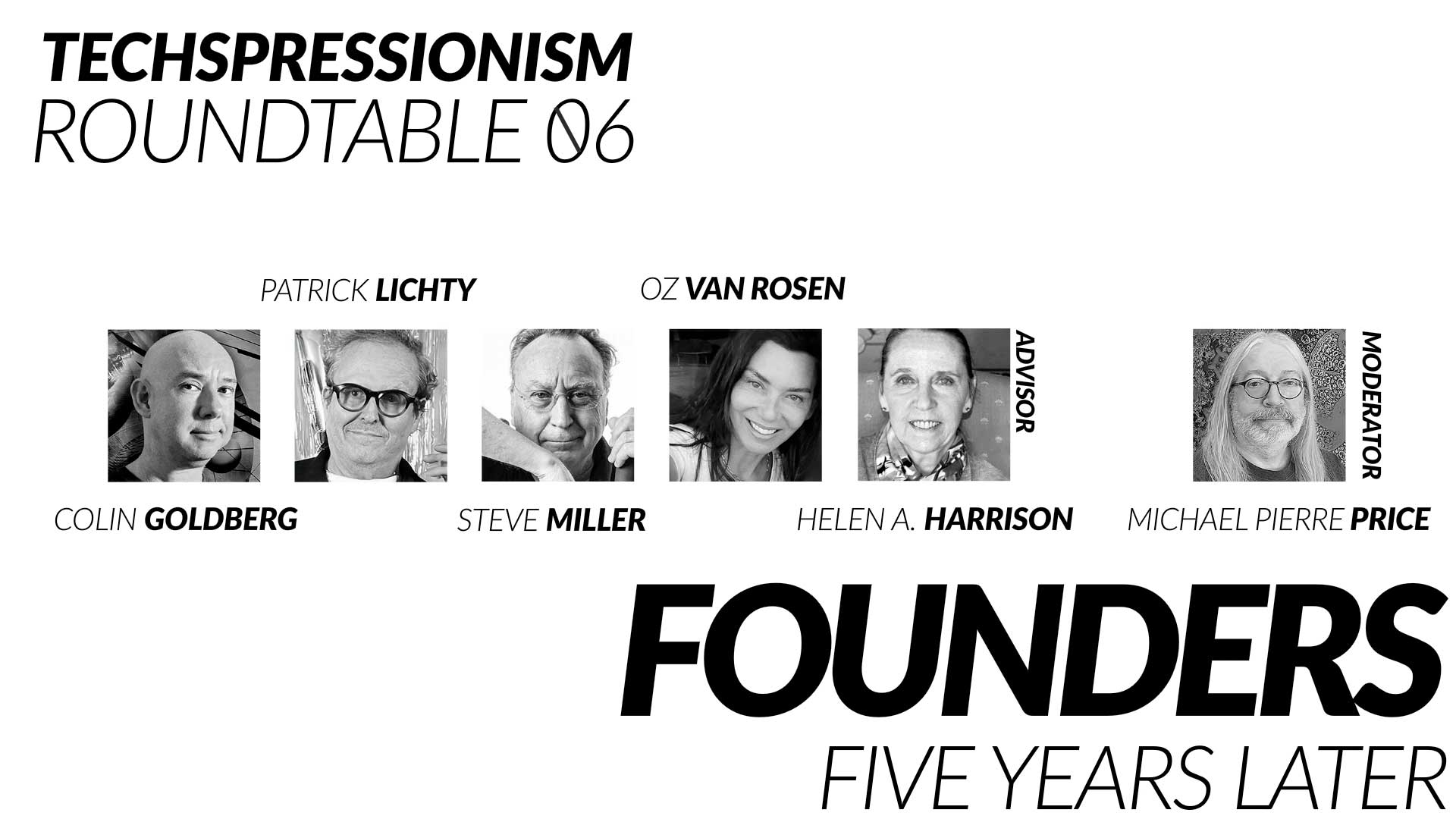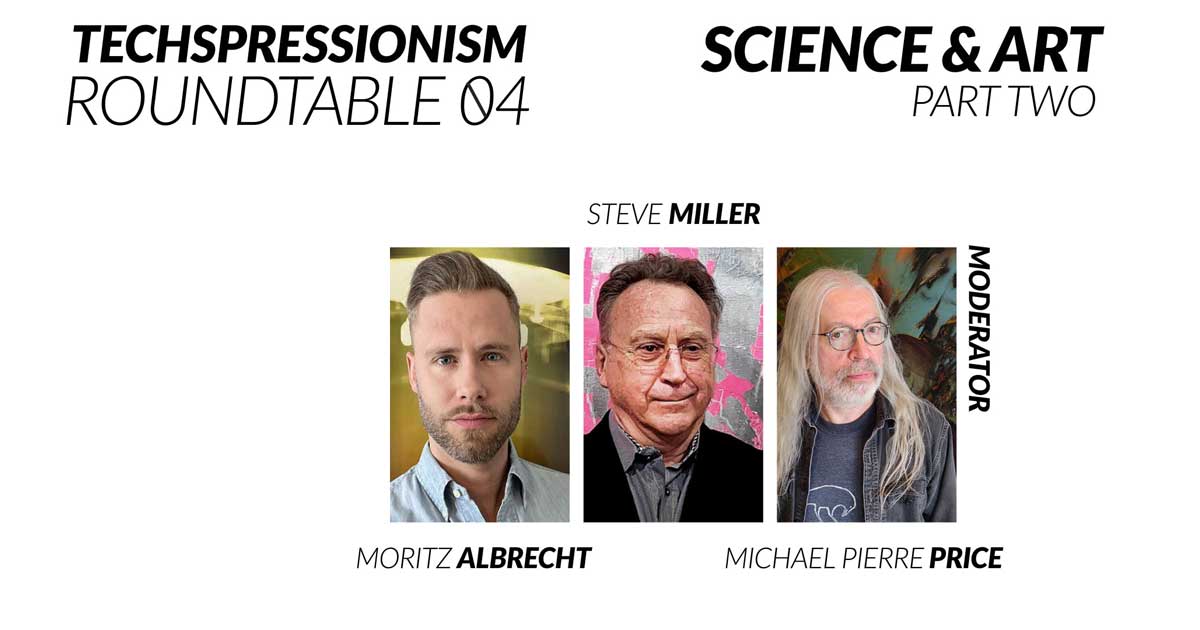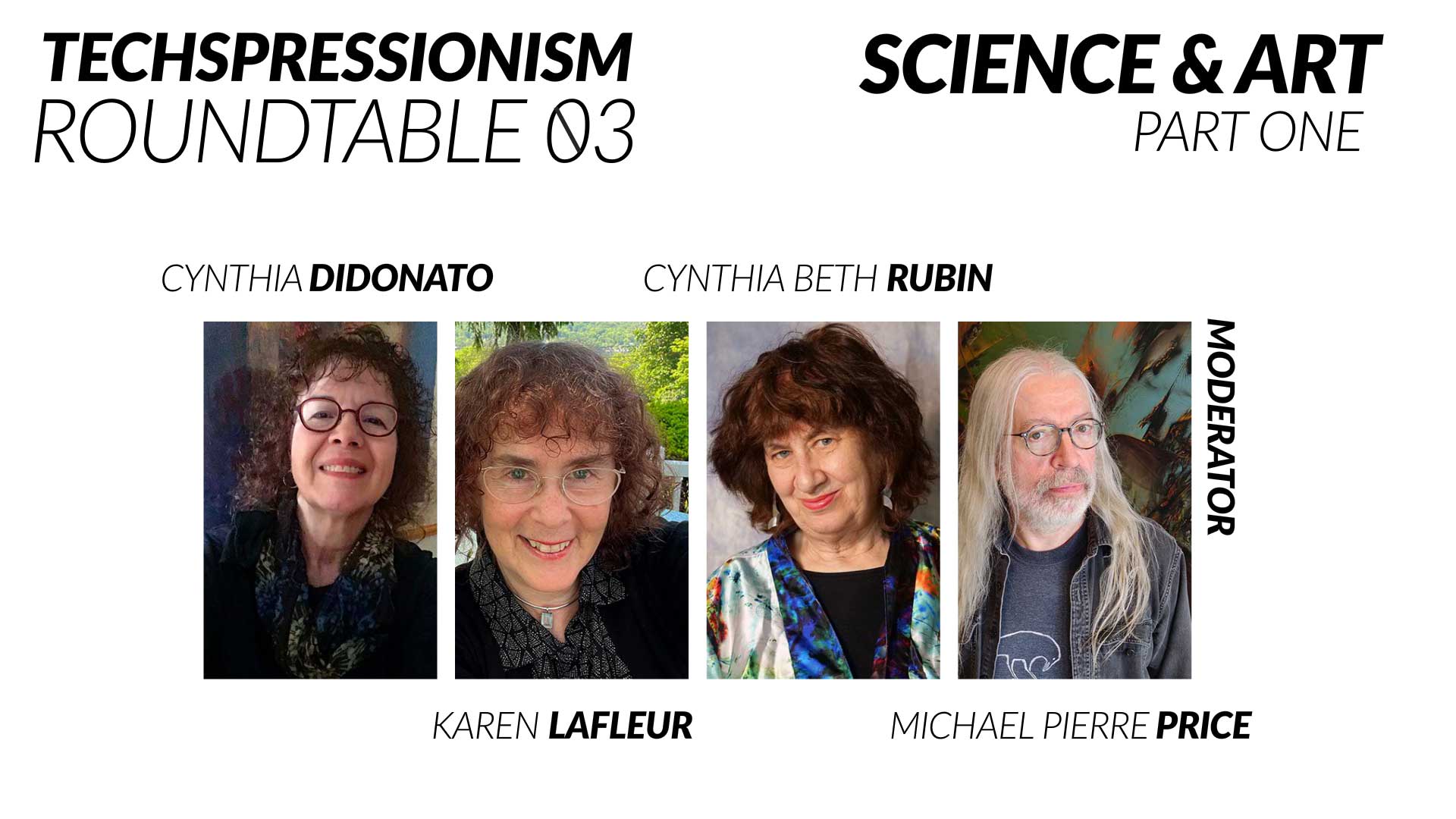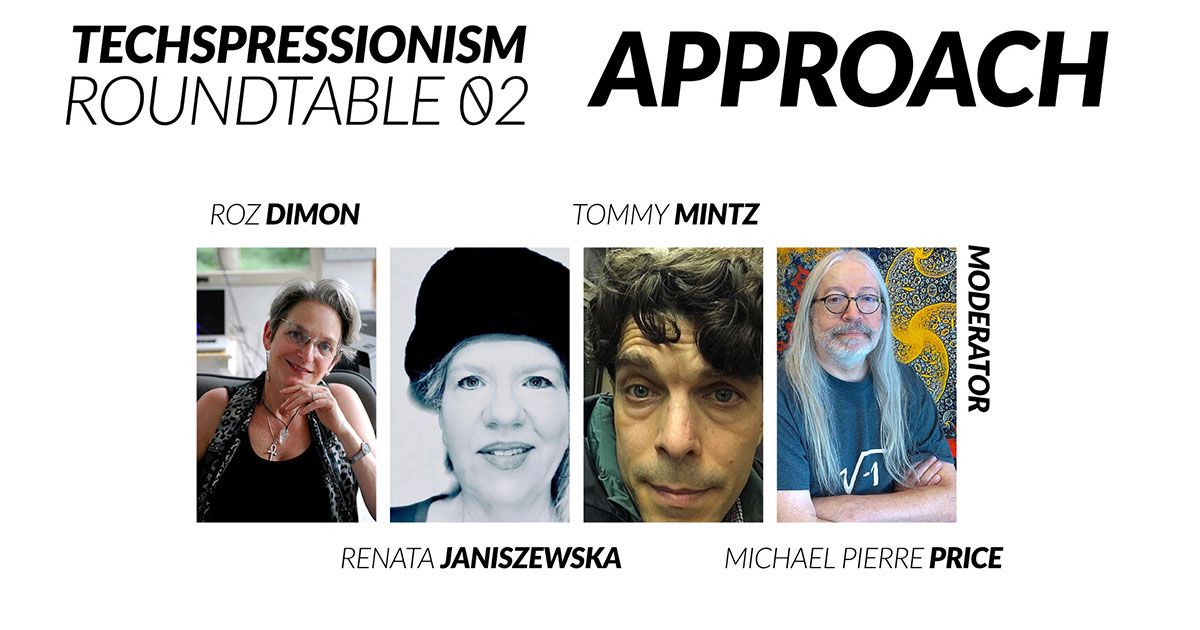Four Techspressionist Artists
Techspressionism Roundtable #05
Recorded June 27, 2025
This roundtable discussion brings together the four artists who collaborated on the eponymous exhibition Four Techspressionist Artists at 150 Media Stream in Chicago. The participating artists, Colin Goldberg, Renata Janiszewska, Karen Lafleur, and Jan Swinburne discuss their influences, artistic origins, and visions for the future of their practices. The discussion is moderated by artist Michael Pierre Price, and it opens with a special guest appearance by ChatGPT, marking the first Techspressionist recording to feature a conversational AI component.
COLIN GOLDBERG
Bronx-born artist Colin Goldberg’s work propels the trajectory of Expressionism into the 21st century. As an undergraduate student, the artist studied painting under the noted Abstract Expressionist painter Angelo Ippolito. Goldberg, who is a Pollock-Krasner Foundation grant recipient, coined the term Techspressionism in 2011 to describe his technology-fueled paintings.
In 2020, he initiated the formation of an artist group around the idea with fellow artists Steve Miller, Patrick Lichty, Oz Van Rosen and art historian Helen A. Harrison, the longtime director of the Pollock-Krasner House and Study Center in Springs, New York. Goldberg is recognized for his ongoing role in developing the community of artists that forms the core of this international movement. The community, currently comprised of artists from over 45 countries, continues to grow through the use of the term as a hashtag on social media, with over 80k Instagram posts currently using the hashtag #techpressionism.
In 2022, Goldberg’s large-scale augmented-reality work Kneeling Icon was acquired by the Hearst Corporation. It is the first AR work in the Hearst collection and is permanently installed in Hearst Tower in Manhattan. The artist’s work has been featured in WIRED, The New York Times and PBS. and resides in numerous private, public and corporate collections.
RENATA JANISZEWSKA
The elements of Janiszewska’s art are both computer-generated and decorated with digital paintings which are drawn by hand with a stylus on the screen of her device. These elements act as characters in the mise en scene made using multiple apps. There is layering, cutting out, blending, superimposition and doubling of material to produce still images or animated loops. Recursivity and chance play a part. She edits these like an early hip-hop artist: connecting the loops using simple mobile editing software. Janiszewska composes and records her own soundtracks.
The DIV quality of her working method frees her tremendously to express her emotions, as a good Techspressionist does. The apps allow her to complete and share work quickly, facilitating experimentation. Hybridization allows for multiple techniques to be used and the file travels through numerous formats in a trice. Some of her themes are bio degradation,altered states of perception, temporal erosion and feminism.
Her works are in both Canadian and international collections. Selected exhibitions at Kingsborough Art Museum, NY,Southampton Arts Centre, NY, Cotuit Centre for the Arts, MA, University of Wisconsin, Patchogue, NY and the Cape Cod Museum of Art, MA.
KAREN LAFLEUR
Karen LaFleur is a Techspressionist artist, writer and animator. Her work explores the interplay between interior and exterior worlds with a focus on adaptability. She reveals vulnerabilities in complex relationships and highlights resiliencies in these ever-shifting landscapes.
LaFleur creates fine art moving images that unfold a complex mixture of 2D and 3D blended imagery. Since 1981 she’s trained in various applications transferring her traditional art skills into moving images that dance across the screen.
Movement is an integral part of LaFleur’s creative process whether digitally rendered or traditionally captured. Her pencil drawings on vellum form a base for her moving image works and include the tiniest of details. Each piece is then digitally painted and animated in a variety of applications to create a world of color, shape and movement. Her skill in visual storytelling combined with Nancy Tucker’s narrative music, brings her moving image works to life with a sense of story rhythm that enriches the work’s believability.
Exhibits Include: Renwick Gallery, Smithsonian Institute, Washington DC, Fuller Museum MA, Union Square San Francisco CA, Hudson Valley MOCA NY, Cotuit Center for the Arts Video Wall MA, MOCA L.l.ghts NY, Cape Cod Museum of Art MA, MOWNA, NYC, The Wrong Biennial, Southampton Art Center NY, Kingsborough Art Museum, Brooklyn NY.
JAN SWINBURNE
Jan Swinburne’s intermedia practice overlaps images, sculpture, and experimental moving image art in two streams: gallery oriented exhibitions, and time based experimental forms. Her thematic focus revolves around speech, language as landscape, degenerated and regenerated images and sounds.
Swinburne has screened/exhibited internationally in Greenwich England, New York City, Brooklyn (Brooklyn Art Museum), (Experi MENTAL Festival 6), New Jersey(Filmideo/lndexArt Centre),South Hampton (TECHSPRESSIONISM: Digital & Beyond), Washington DC (RhizomeDC), Croatia ( fu:bar 2k23) and in Canada (MUFF, Vector, Art On The Screens, Trinity Square Video, Photophobia, Pleasure Dome TNW tour, Long Winter and more). Her sonic works have been published in The Wire Magazine and through Alrealon Musique record label.
Swinburne works and lives in Toronto, Canada.
MODERATOR: Michael Pierre Price
“My artwork could not exist without modern computers, advanced algorithms, and sophisticated printing technology. They are my vital partners in conveying my creativity. This particular work expresses my deep-felt personal understanding about the nature of the universe and reality. Its fractal-like quality is both precise and chaotic. A beauty felt in the moment, impossible to fully comprehend. All of this emerges from an irreducible core, No-Mind. It is zero and infinity, being and not being.
Our universe is much grander than we realize. We go about our lives within a narrow range of existence that often hinders our appreciation for the fractal-like tapestry of the vast reality beyond our senses. To truly understand our world, we need a profound shift away from the perspective of old notions. My artwork presents just such a shift; weaving elements of chaos theory, quantum mechanics, cosmology, neuroscience, dreams, and technology into a cohesive artistic and spiritual framework.”




